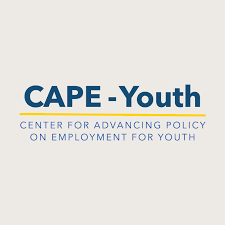By Enmanuel Gomez Antolinez
While numerous public, private and nonprofit programs and services are available to support the employment of youth and young adults with disabilities (Y&YAD), a lack of coordination between stakeholders can result in service gaps and duplication. Wisconsin used braided funding strategically to increase coordination and alignment between employers, service providers, education sponsors and workforce systems, enhancing Y&YAD services and outcomes. Braided funding is a financing method that uses multiple funding streams to support the total cost of a program or service. It ensures that funding goes where it is most needed, encourages interagency coordination and ensures the appropriate program and administrative costs are properly charged to each separate funding stream. According to the U.S Department of Labor, Office of Disability Employment Policy braided funding can be used to:
- Support an individual with a disability with the goal of pursuing, gaining, or keeping Competitive Integrated Employment (CIE),
- Support Pre-Employment Transition Services, and
- Support post-secondary preparation and transition activities.
The U.S Department of Health and Human Services’ Braiding Federal Funding to Expand Access to Quality Early Care and Education and Early Childhood Supports and Services: A Tool for State and Local Communities discusses this in more detail.
While this tool has an early education focus, the analysis it utilizes is equally applicable in a transition setting. Specifically, as outlined in the tool, states and local governments may consider implementing the following strategies to support and expand transition services to Y&YAD through braided funding by:
- Identifying funding streams.
- Identify what funding sources are available in your state or locality and identify how this funding can be used to achieve specific goals.
- Developing an inventory of funds known as a fiscal map, directed toward a particular population (e.g., Y&YAD) or service group. A fiscal map can be used to:
- Recognize duplicative funding streams as well as gaps in funding.
- Establish methods to use funds more strategically.
- Identifying eligible populations and comparing funding requirements.
- For many funding streams, there are rules and restrictions that govern the use of the funds. Therefore, it is important to identify eligible populations and understand the differences in eligibility and reporting requirements among various funding streams available in your state or locality.
- Building and initiating data-sharing agreements to make it easier for state and local organizations to braid funds.
- Developing shared goals and a plan for collaboration.
- Permit local agencies, organizations, task forces, councils or committees to perform coordinated planning and funding functions outside a formal state framework.
- Use interagency planning groups to coordinate funding for specific objectives.
- Building state or local programs that use multiple funding streams rather than leaving it to individual provider level to pursue different funding streams.
- Developing governance structures to support collaboration between agencies and other key players in state or local entities.
Wisconsin is one state that engages in braided funding to support Y&YAD. Wisconsin’s 2020-23 Combined State Workforce Innovation and Opportunity Act (WIOA) Plan prioritizes and directs state agencies to identify opportunities for braided funding to provide effective employment services to individuals with disabilities. Wisconsin’s WIOA Plan also directs cost-sharing to be negotiated among state entities, such as education, vocational rehabilitation (DVR) and local entities such as long-term care and mental health agencies. For example, cost-sharing may be negotiated among DVR, the school district and long-term care or mental health programs when there is an overlap in educational and employment/rehabilitation goals and services. This negotiation increases coordination between the various parties to ensure their specific funds contributed to the program or service are used for their designated purposes.
Similarly, the Wisconsin Departments of Health Services, Workforce Development and Public Instruction developed a comprehensive Transition Action Guide (TAG). This guide outlines a strategic approach to help Wisconsin state and local governments identify overlaps or gaps in service provision in the areas of communication, coordination and service delivery for Y&YAD transitioning from school to work. It lists funding sources and their eligibility requirements so agencies can pursue braided funding opportunities. The resource also discusses cost-sharing agreements among agencies and when these agreements are appropriate.
For more information and state examples of the benefits of braided funding efforts, review CAPE-Youth’s Improving Transition Services for Youth and Young Adults with Disabilities through Braided Funding.

